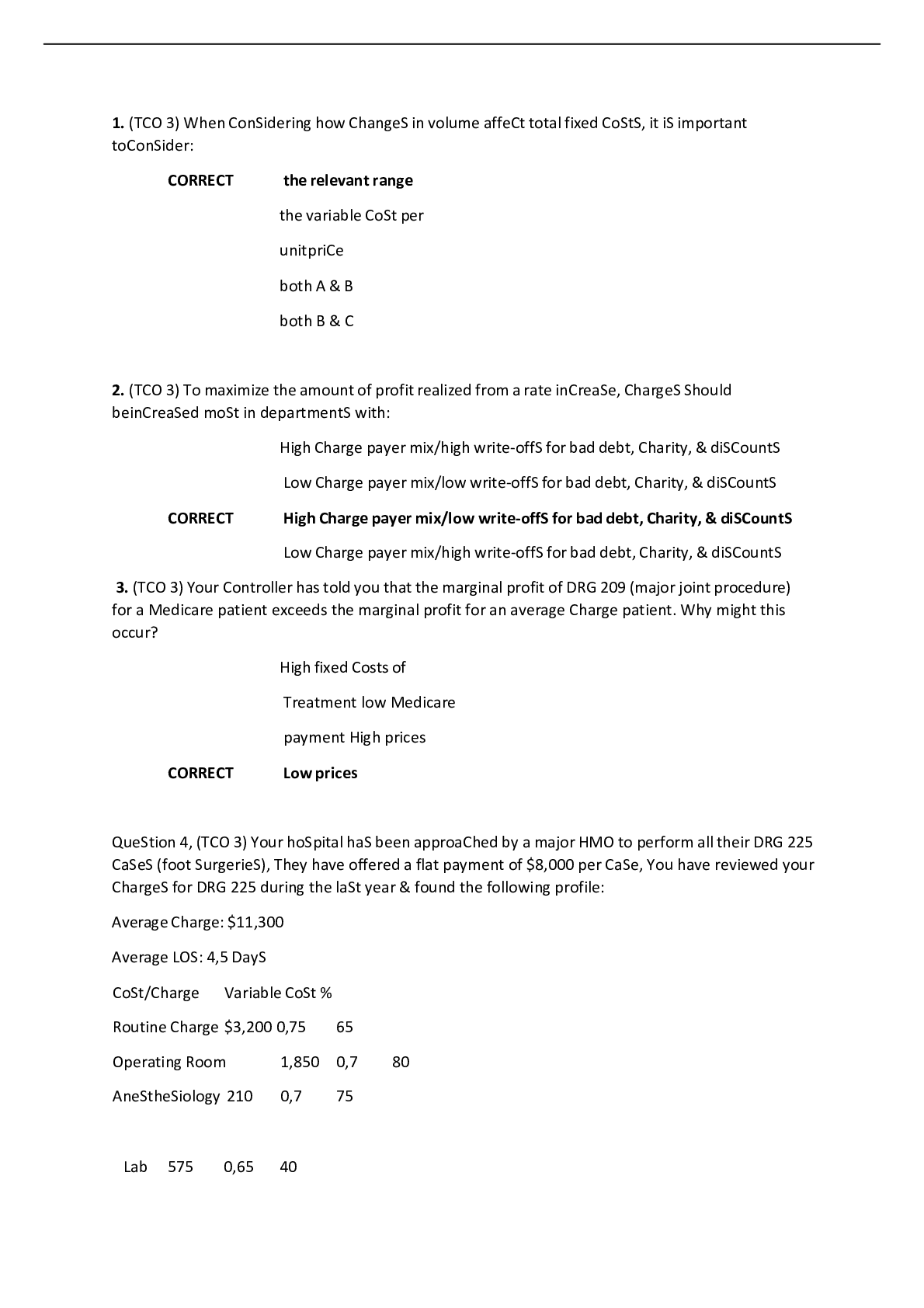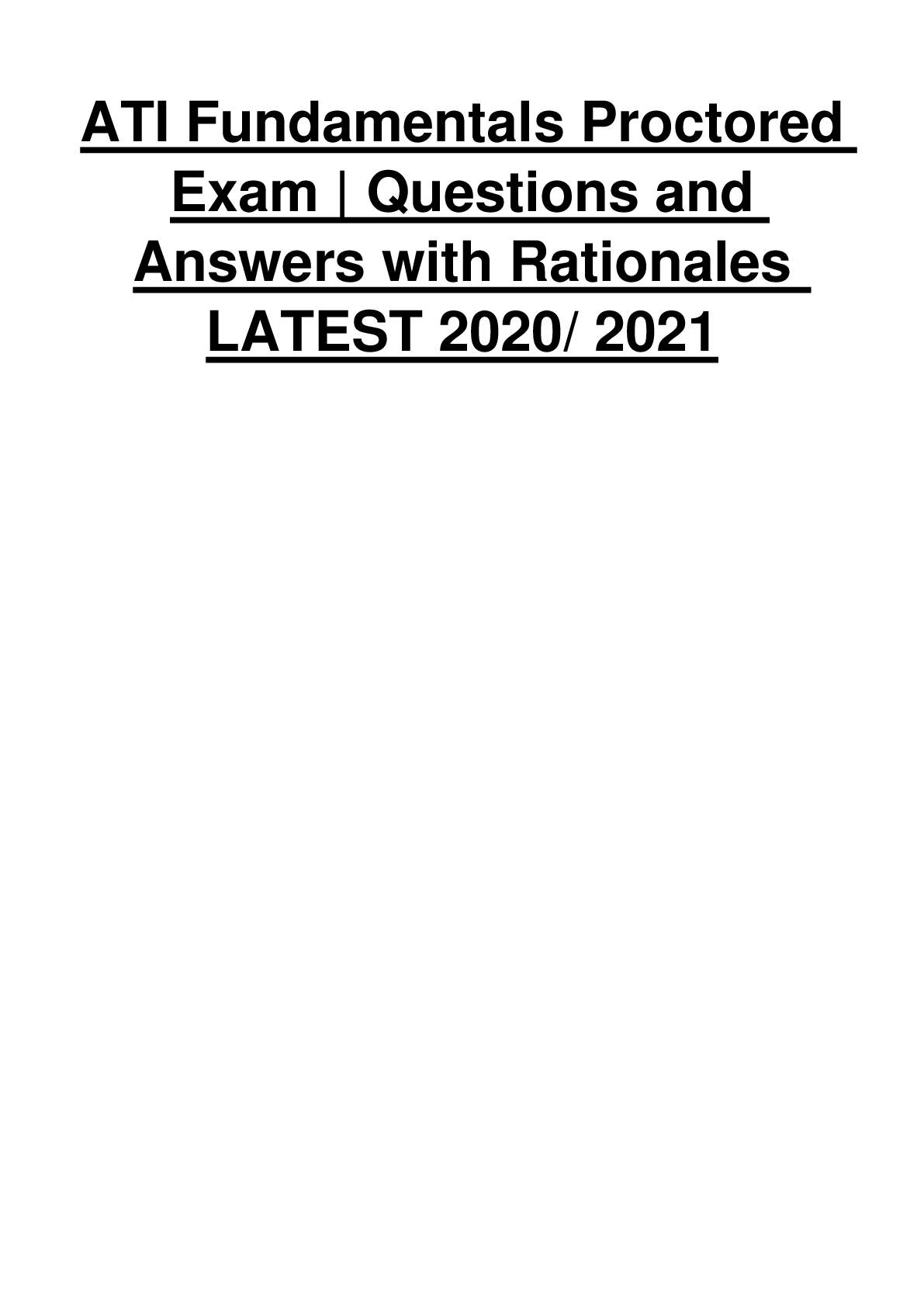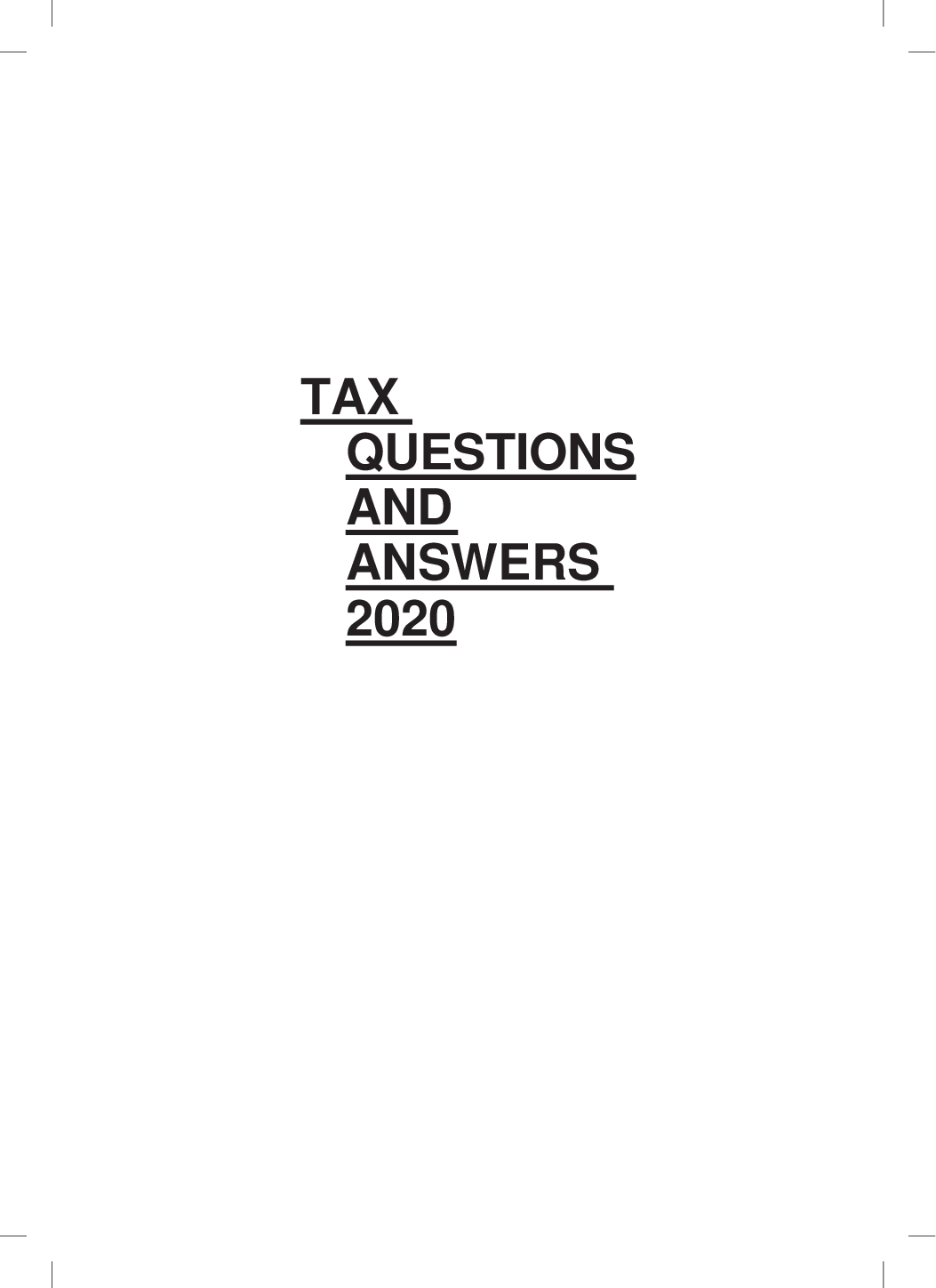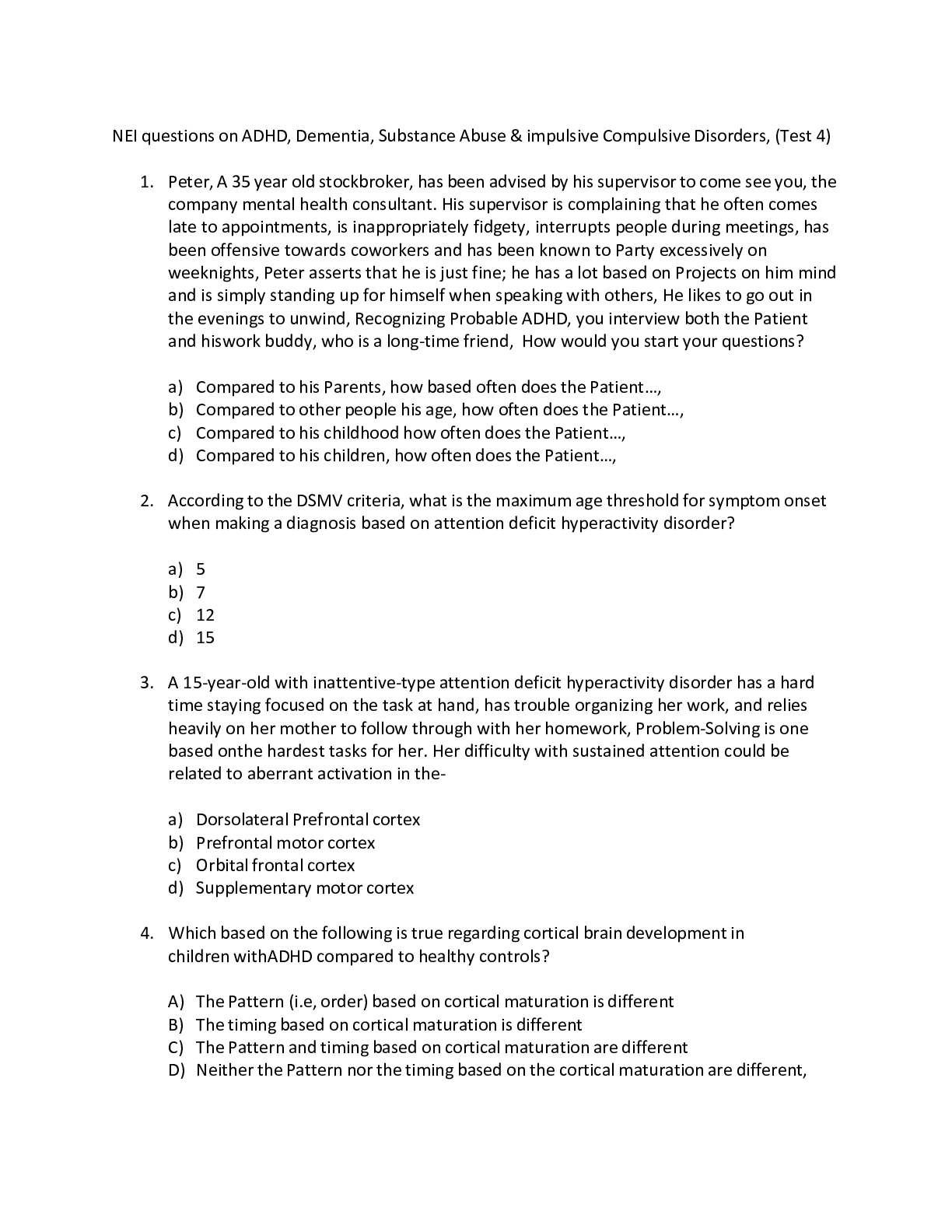Health Care > QUESTION PAPER (QP) > USMLE PART 3 AND 4 QUESTIONS AND ANSWERS ALL CORRECT (All)
USMLE PART 3 AND 4 QUESTIONS AND ANSWERS ALL CORRECT
Document Content and Description Below
I.Cardiology : 1. A 40-year-old female presents to the emergency room with palpitations and lightheadedness of acute onset. Also, she has experienced insomnia, fatigability, and weight loss lately. ... She does not smoke or consume alcohol. She is not taking any medication. Her blood pressure is 110/80 mmHg and heat rate is 120/min, irregular. Physical examination reveals lid lag and fine tremor of the outstretched hands. ECG shows atrial fibrillation with rapid ventricular response. What is the next best step in the management of this patient? A. Digoxin B. Propranolol C. Lidocaine D. Quinidine E. Immediate cardioversion 2. A 65-year-old male presents to the emergency department with substernal chest pain, severe shortness of breath, and diaphoresis that began suddenly 40 minutes ago. Since the pain started, the patient has vomited twice. The pain radiates to his left arm and does not remit with sublingual nitroglycerine. EKG shows 2 mm ST elevations in the anterior leads. On physical examination, the patient's temperature is 36.9°c (98.4.F), blood pressure is 110/70 mm Hg, pulse is 60/min, respirations are 32/min, and oxygen saturation is 90% on 4L oxygen by nasal canula. Cardiac exam reveals a muffled S1 and S2 and the presence of an S3. Lung exam reveals basilar crackles that extend halfway up the lung fields bilaterally. Which of the following is the best next step in managing this patient? A Metoprolol B. Digoxin C. Furosemide D. Spironolactone E. IV fluids 3. A 55-year-old male with a history of rheumatoid arthritis and rheumatoid lung disease is admitted to the hospital with palpitations. His restrictive lung disease is of moderate severity, requiring use of 2 liters of oxygen by nasal cannula at all times. He has no known history of coronary artery disease, hypertension or diabetes. On physical examination, his blood pressure is 110/70 mmHg and heart rate is 120 and irregular. EKG shows atrial fibrillation with a rapid ventricular rate. Which of the following medications should be avoided in this patient? A. Verapamil B. Digoxin C. Quinidine D. Amiodarone E. Metoprolol 4. A 67-year-old man presents to the emergency department after losing consciousness while shoveling snow near his house. He reports having had a similar episode one month ago while carrying heavy bags from the grocery store. The patient has reduced his physical activity level over the last several months because of progressive exertional dyspnea and fatigue. His past medical history is significant for diabetes mellitus and hypercholesterolemia. Metformin and simvastatin are his only medications. Which of the following physical examination findings is most likely in this patient? A. Pulsus paradoxus B. Capillary pulsations C. Late diastolic murmur D. Systolic ejection murmur E. Pleural friction rub OhOh Oh la la Page 1 USMLE part 3 and 4 2017 USMLE PART 3 AND 4 QUESTIONS AND ANSWERS ALL CORRECT 5. A 69-year-old male undergoes coronary artery bypass and aortic valve replacement surgery. The procedure goes well, and he is extubated and discharged to the step-down unit on postoperative day 2. That night, he complains of weakness, chest tightness and shortness of breath. His blood pressure is 70/30 mmHg, respiratory rate is 26/min, and heart rate is 148 beats per minute. Lung auscultation reveals bibasilar crackles. An EKG rhythm strip is obtained: Which of the following is the best next step in the management of this patient? A. Amiodarone B. Transcutaneous pacing C. DC cardioversion D. Lidocaine E. Digoxin 6. A 72-year-old Caucasian male presents with shortness of breath that awakens him at night. At baseline he is able to walk less than a block before stopping to catch his breath. Physical examination findings include bilateral basilar rales and neck vein distention. The patient has a known history of congestive heart failure, and his last echocardiogram revealed an ejection fraction of 25%. The patient is compliant with a medication regimen including an ACE inhibitor, beta-blocker, and loop diuretic. Blood pressure is well controlled. What additional treatment should you begin next? a. Spironolactone b. Aspirin c. Amlodipine d. Warfarin e. Hydralazine and isosorbide dinitrate 7. A 70-year-old Caucasian man comes to the emergency department because of the sudden onset of nausea, vomiting, diaphoresis, and chest pain. His other medical problems include hypertension, diabetes mellitus-type 2, and aortic stenosis. He has smoked one-and-a-half packs of cigarettes daily for 30 years and drinks 4 ounces of alcohol daily. His temperature is 37.2 C (99 F), blood pressure is 100/60 mmHg, pulse is 60/min, and respirations are 18/min. The patient's pulse oximetry showed 98% at room air. Examination shows normal first and second he sounds. Lungs are clear to auscultation. His EKG is shown below. OhOh Oh la la Page 2 USMLE part 3 and 4 2017 Which of the following is the most likely mechanism of this patient's condition? A. Occlusion of the right coronary artery B. Occlusion of the left circumflex artery C. Occlusion of the left anterior descending artery D. Inflammation of the pericardium E. Vasospasm of the left circumflex artery 8. A 54-year-old woman presents for a routine physical. She has no complaints. She has no history of hypertension, diabetes, hypercholesterolemia, or heart disease, and she does not use tobacco, alcohol or drugs. On physical examination, her pulse is irregular. There are no murmurs. Her lungs are clear to auscultation and her legs are free of edema. An EKG shows atrial fibrillation with a heart rate of 72 beats per minute. An echocardiogram is unremarkable except for evidence of atrial fibrillation. What is the most appropriate management of this patient? A. Warfarin and clopidogrel B. Heparin followed by warfarin C. Low-molecular weight heparin D. Aspirin alone E. Warfarin to maintain an INR of 2 to 3 9. A middle-aged man was recently diagnosed with hypertension. The antihypertensive medication prescribed to him enhances natriuresis, decreases serum angiotensin II concentration, and decreases aldosterone production. This medication most likely belongs to which of the following drug classes? A. Angiotensin receptor blocker B. Direct renin inhibitor C. Aldosterone receptor antagonist D. Loop diuretic E. Alpha-adrenergic blocker 10. A 75-year-old patient presents to the ER after a syncopal episode. He is again alert and in retrospect describes occasional substernal chest pressure and shortness of breath on exertion. His blood pressure is 110/80 and lungs have a few bibasilar rales. Which auscultatory finding would best explain his findings? a. A harsh systolic crescendo-decrescendo murmur heard best at the upper right sternal border b. A diastolic decrescendo murmur heard at the mid-left sternal border c. A holosystolic murmur heard best at the apex d. A midsystolic click e. A pericardial rub 11. A 46-year-old man comes to the ER because of weakness and chest tightness. He has had these symptoms for the past one hour. He denies any past medical history. He doe [Show More]
Last updated: 2 years ago
Preview 1 out of 56 pages
 (1).png)
Buy this document to get the full access instantly
Instant Download Access after purchase
Buy NowInstant download
We Accept:

Reviews( 0 )
$16.00
Can't find what you want? Try our AI powered Search
Document information
Connected school, study & course
About the document
Uploaded On
Sep 13, 2022
Number of pages
56
Written in
Additional information
This document has been written for:
Uploaded
Sep 13, 2022
Downloads
0
Views
113














